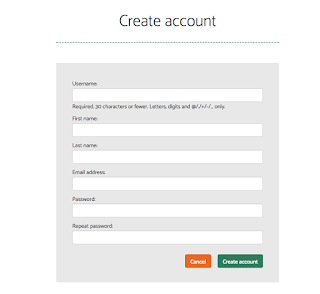Traceback (most recent call last):
File "myproject/philter/tests/test_api.py", line 284, in test_play
response = self.create_game(self.users[0])
File "myproject/philter/tests/test_api.py", line 248, in create_game
response = self.game_view(request)
File "myproject/venv/lib/python3.6/site-packages/django/views/decorators/csrf.py", line 58, in wrapped_view
return view_func(*args, **kwargs)
File "myproject/venv/lib/python3.6/site-packages/django/views/generic/base.py", line 68, in view
return self.dispatch(request, *args, **kwargs)
File "myproject/venv/lib/python3.6/site-packages/rest_framework/views.py", line 489, in dispatch
response = self.handle_exception(exc)
File "myproject/venv/lib/python3.6/site-packages/rest_framework/views.py", line 449, in handle_exception
self.raise_uncaught_exception(exc)
File "myproject/venv/lib/python3.6/site-packages/rest_framework/views.py", line 486, in dispatch
response = handler(request, *args, **kwargs)
File "myproject/philter/api/views.py", line 149, in post
possible_question_count = questions.count()
File "myproject/venv/lib/python3.6/site-packages/django/db/models/query.py", line 364, in count
return self.query.get_count(using=self.db)
File "myproject/venv/lib/python3.6/site-packages/django/db/models/sql/query.py", line 499, in get_count
number = obj.get_aggregation(using, ['__count'])['__count']
File "myproject/venv/lib/python3.6/site-packages/django/db/models/sql/query.py", line 463, in get_aggregation
outer_query.add_subquery(inner_query, using)
File "myproject/venv/lib/python3.6/site-packages/django/db/models/sql/subqueries.py", line 209, in add_subquery
self.subquery, self.sub_params = query.get_compiler(using).as_sql(with_col_aliases=True)
File "myproject/venv/lib/python3.6/site-packages/django/db/models/sql/compiler.py", line 420, in as_sql
where, w_params = self.compile(self.where) if self.where is not None else ("", [])
File "myproject/venv/lib/python3.6/site-packages/django/db/models/sql/compiler.py", line 373, in compile
sql, params = node.as_sql(self, self.connection)
File "myproject/venv/lib/python3.6/site-packages/django/db/models/sql/where.py", line 79, in as_sql
sql, params = compiler.compile(child)
File "myproject/venv/lib/python3.6/site-packages/django/db/models/sql/compiler.py", line 373, in compile
sql, params = node.as_sql(self, self.connection)
File "myproject/venv/lib/python3.6/site-packages/django/db/models/fields/related_lookups.py", line 96, in as_sql
return super(RelatedIn, self).as_sql(compiler, connection)
File "myproject/venv/lib/python3.6/site-packages/django/db/models/lookups.py", line 381, in as_sql
return super(In, self).as_sql(compiler, connection)
File "myproject/venv/lib/python3.6/site-packages/django/db/models/lookups.py", line 170, in as_sql
rhs_sql, rhs_params = self.process_rhs(compiler, connection)
File "myproject/venv/lib/python3.6/site-packages/django/db/models/lookups.py", line 372, in process_rhs
return super(In, self).process_rhs(compiler, connection)
File "myproject/venv/lib/python3.6/site-packages/django/db/models/lookups.py", line 229, in process_rhs
return super(FieldGetDbPrepValueIterableMixin, self).process_rhs(compiler, connection)
File "myproject/venv/lib/python3.6/site-packages/django/db/models/lookups.py", line 100, in process_rhs
sql, params = compiler.compile(value)
File "myproject/venv/lib/python3.6/site-packages/django/db/models/sql/compiler.py", line 373, in compile
sql, params = node.as_sql(self, self.connection)
File "myproject/venv/lib/python3.6/site-packages/django/db/models/sql/compiler.py", line 420, in as_sql
where, w_params = self.compile(self.where) if self.where is not None else ("", [])
File "myproject/venv/lib/python3.6/site-packages/django/db/models/sql/compiler.py", line 373, in compile
sql, params = node.as_sql(self, self.connection)
File "myproject/venv/lib/python3.6/site-packages/django/db/models/sql/where.py", line 79, in as_sql
sql, params = compiler.compile(child)
File "myproject/venv/lib/python3.6/site-packages/django/db/models/sql/compiler.py", line 373, in compile
sql, params = node.as_sql(self, self.connection)
File "myproject/venv/lib/python3.6/site-packages/django/contrib/gis/db/models/lookups.py", line 143, in as_sql
sql_params.extend(rhs_params)
AttributeError: 'tuple' object has no attribute 'extend'

